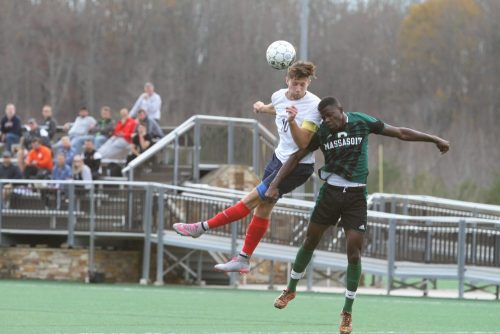Why it might take longer than you think
You’ve heard of the anterior cruciate ligament (ACL)… and the devastating effects of injury as well as the lengthy rehabilitation process following surgery. However, did you know that it could take up to TWO YEARS to regain proper strength and biomechanics to return to full competitive sport at a safe level??
High rates of re-injury tell us that many athletes return to their sport too soon. A standard recommendation based on timeframe or a few simple screening tests may not be the best indicators for determining whether the athlete is ready to play or not. There are many variables that must be considered before the athlete should return to sport.
In this article, we summarize recent findings from the research regarding returning to sport after ACL surgery; we highlight various factors that can lead to increased risk of re-injury; and we conclude with recommendations from experts when considering returning to sport after ACL repair.
Return-to-sport outcomes after ACL reconstruction are less-than optimal; and researchers are diving into cases to figure out how we can more accurately predict when an athlete is “ready.”
Historically, the recovery time has been generally accepted as 9-12 months; however, a recent study found that only 11% of patients met all of the strength criteria to be cleared for sport at 9 months after surgery. Another study found that only 20% of patients demonstrated adequate muscle function at 12 months after surgery. The problem with these low rates of “readiness” is that an athlete returning to sport with a strength deficit has a FOUR TIMES GREATER chance of re-injuring the ACL!
Another interesting study revealed that 23% of young athletes recovering from ACL surgery had a re-tear within 12 months of surgery, and nearly half of these re-tears were non-contact injuries (meaning largely preventable).
WHY are athletes re-injuring their ACLs after reconstruction surgery and rehabilitation??
Good rehabilitation is imperative to a successful return to competitive sports, but it isn’t perfect; and we must understand that there are numerous variables that can lead to an increased risk of re-injury.
The following list shows some examples of factors that increase the risk of ACL re-injury after surgery:
- Residual weakness in the leg muscles, including the hip and core muscles
- Muscle imbalances, including insufficient strength ratios between muscle groups, such as hamstrings and quadriceps
- Altered biomechanics
- Poor landing mechanics
- Muscle fatigue and endurance deficits
- Fear avoidance behaviors, including mental barriers and lack of confidence
With so many factors that contribute to a higher risk of re-injury, you can see how difficult it might be to properly address and resolve all factors during the rehabilitation process, especially if the athlete rushes back into sport too soon.
What do experts recommend for a safe return to sports?
Many experts are now challenging the 9 to 12 month recovery time and recommending that athletes wait longer to return to sports, closer to 18-24 months, to have a more successful return without re-injury. However, timeframe alone should not be the determinant.
Return-to-sport screening tests can also be helpful in revealing obvious strength and control deficits on one leg versus the other. A specialist can guide an athlete through a series of quick functional tests, but, unfortunately, there are still some flaws in this process. The ability to squat or hop on one foot does not accurately correlate to pivoting and cutting on a field or court in an intense, dynamic environment.
Furthermore, mental barriers and fear of re-injury are crucial factors to address before an athlete should return to sport. The athlete may have excellent strength in a controlled test, but regaining confidence in their movement does not necessarily follow the same timeline and must be dealt with appropriately.
Perhaps we should emphasize the element of “art” in determining when an athlete is ready to return to sports after ACL repair. When strength, control, confidence, and time magnificently compound, the athlete will be ready…and it might take longer than you think to achieve that state.
With such a devastating multi-factorial impact, we hope to see anterior cruciate ligament injuries and re-injuries decrease substantially. In time, we hope fewer and fewer athletes will experience the lengthy process. For many young athletes, a one to two year hiatus from their sport as a teenager is career-ending…let alone bouncing back after suffering through it twice. Let’s set our athletes up for success as much as possible.
Click here to learn more about how you can reduce the risk of ACL injury.
To join in discussions about injury prevention strategies in a safe and supportive place, join our group Keeping Athletes In The Game.



